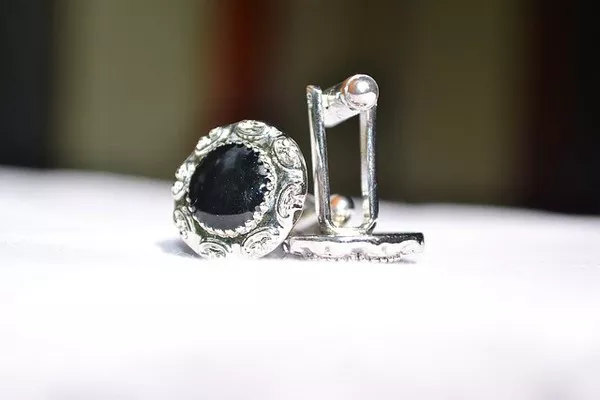Silver, a precious metal with a rich history spanning millennia, holds a significant position in the global market as both a commodity and an investment asset. Its lustrous allure and diverse applications have cemented its importance in various industries, ranging from electronics to healthcare. Understanding how the price of silver is determined is crucial for investors, traders, and industry stakeholders alike. The price of silver is dynamic, subject to the interplay of numerous factors that shape its value in the market.
Spot Price of Silver
At the heart of silver pricing lies the concept of the spot price, which represents the current market price for immediate delivery of silver. This price is determined by supply and demand dynamics in the global marketplace and serves as a benchmark for pricing silver products worldwide. Traders and investors closely monitor the spot price as it provides real-time information about the prevailing market sentiment and influences pricing decisions across the supply chain.
Market Supply and Demand
The price of silver is intricately linked to the fundamental forces of supply and demand. On the supply side, mining output plays a pivotal role in determining the quantity of silver available in the market. Factors such as mining disruptions, technological advancements, and regulatory changes can affect supply levels. Conversely, demand for silver stems from a myriad of sources, including industrial applications, investment demand, and jewelry fabrication. Fluctuations in industrial production, consumer preferences, and macroeconomic conditions can influence the demand for silver, thereby impacting its price.
Economic Indicators
Global economic conditions exert a profound influence on the price of silver. Economic indicators such as inflation, currency strength, and interest rates play a crucial role in shaping market sentiment towards precious metals. Inflationary pressures often drive investors towards safe-haven assets like silver, as they seek to hedge against the erosion of purchasing power. Moreover, fluctuations in currency markets can affect the relative value of silver, especially in regions with significant mining or consumption activity. Additionally, changes in interest rates can impact the opportunity cost of holding silver versus other financial instruments, thereby influencing demand.
Silver Futures Contracts
Futures contracts play a vital role in facilitating price discovery and risk management in the silver market. These financial instruments enable market participants to speculate on the future price of silver without the need for physical ownership. Unlike spot prices, which reflect current market conditions, futures prices represent the expected future value of silver at a specified date. Futures contracts are traded on exchanges, providing liquidity and transparency to market participants. The difference between spot prices and futures prices, known as the basis, reflects market expectations regarding future supply and demand dynamics, storage costs, and financing expenses.
Investment Demand
Investors play a significant role in influencing the price of silver through their demand for various investment vehicles. Exchange-traded funds (ETFs), physical silver coins, and bars are popular instruments through which investors gain exposure to silver. ETFs, in particular, have emerged as a convenient way for both retail and institutional investors to invest in silver without the logistical challenges associated with physical ownership. Fluctuations in investor sentiment, macroeconomic conditions, and geopolitical events can drive shifts in investment demand for silver, thereby impacting its price.
See Also How To Tell If Silver Is Sterling Or Plated
Industrial and Technological Uses
Beyond its traditional role as a store of value, silver boasts a wide range of industrial applications, driven by its unique properties such as conductivity, reflectivity, and antibacterial qualities. In the electronics industry, silver is indispensable for the production of conductive pastes used in circuit boards, touchscreens, and RFID tags. Moreover, silver’s reflective properties make it an essential component in solar panels, helping to harness renewable energy sources. In healthcare, silver finds applications in wound dressings, medical devices, and water purification systems, owing to its antimicrobial properties. Technological advancements and evolving consumer preferences continue to drive demand for silver across diverse industries.
Geopolitical Factors
Geopolitical events can introduce volatility into the silver market, as they disrupt supply chains, affect investor sentiment, and alter macroeconomic conditions. Instances of geopolitical tension, trade disputes, or geopolitical instability in key silver-producing regions can lead to sudden price fluctuations. Moreover, policy decisions by governments and central banks, such as trade tariffs, sanctions, or monetary stimulus measures, can impact the broader economic environment and, by extension, the price of silver. Recent examples include trade tensions between major economies, geopolitical unrest in key silver-producing countries, and shifts in global trade dynamics.
Historical Price Trends
Examining historical price trends provides valuable insights into the long-term performance of silver as an asset class. Over the centuries, silver has experienced periods of boom and bust, driven by various factors including technological advancements, shifts in industrial demand, and macroeconomic conditions. Historical data on silver prices, represented through charts or graphs, offer context for understanding current market levels and forecasting future price movements. By analyzing historical patterns and identifying recurring themes, investors and analysts can make informed decisions about silver investments and risk management strategies.
See also Investing in Silver Stocks: A Comprehensive Guide
Conclusion and Future Outlook
In conclusion, the price of silver is determined by a complex interplay of factors, including supply and demand dynamics, economic indicators, investment demand, industrial usage, geopolitical events, and historical trends. Understanding these drivers is essential for stakeholders in the silver market to make informed decisions and manage risks effectively. Looking ahead, silver is poised to continue playing a vital role in various industries, driven by technological advancements and evolving consumer preferences. However, uncertainty surrounding global economic conditions and geopolitical developments may introduce volatility into the market. By staying abreast of market trends and leveraging historical insights, investors can navigate the dynamic landscape of silver pricing with confidence.


